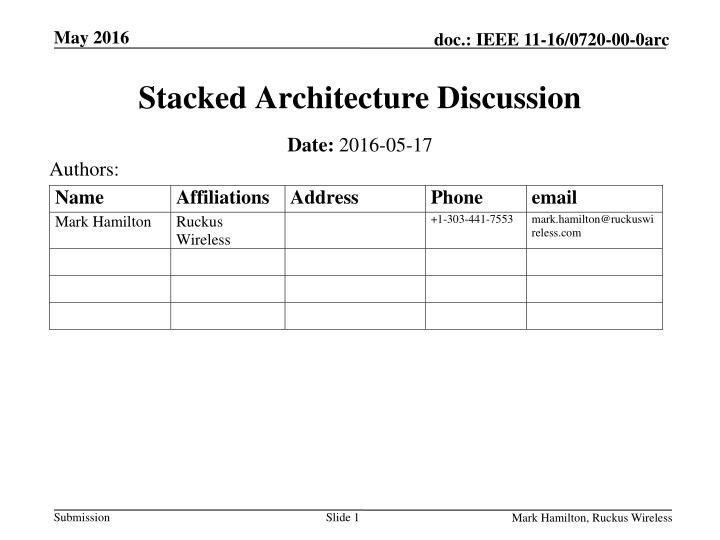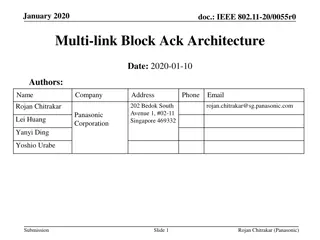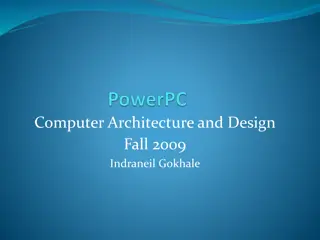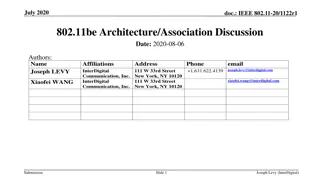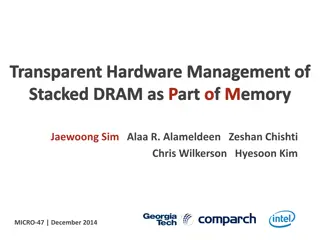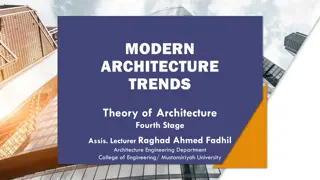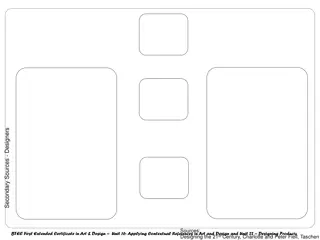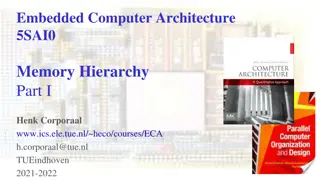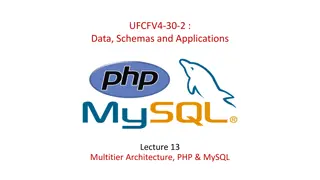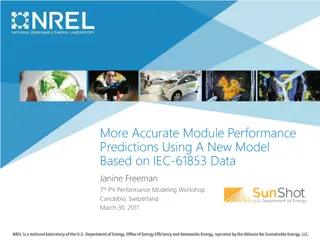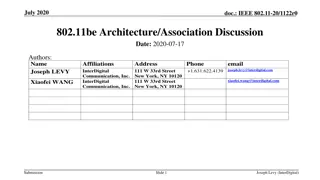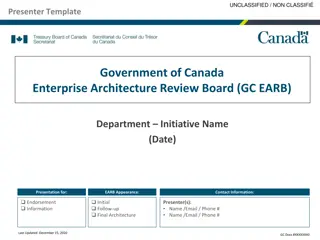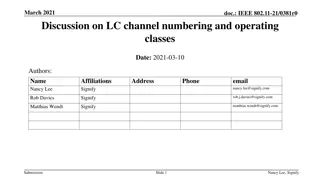Stacked Architecture Model in 802.11 Discussion
This presentation discusses the use of a stacked architecture model in 802.11, exploring how entities communicate within and across layers. It examines the protocol flows, service provisions, and entity interactions in the context of peer communication and service layers.
Download Presentation

Please find below an Image/Link to download the presentation.
The content on the website is provided AS IS for your information and personal use only. It may not be sold, licensed, or shared on other websites without obtaining consent from the author.If you encounter any issues during the download, it is possible that the publisher has removed the file from their server.
You are allowed to download the files provided on this website for personal or commercial use, subject to the condition that they are used lawfully. All files are the property of their respective owners.
The content on the website is provided AS IS for your information and personal use only. It may not be sold, licensed, or shared on other websites without obtaining consent from the author.
E N D
Presentation Transcript
May 2016 doc.: IEEE 11-16/0720-00-0arc Stacked Architecture Discussion Date: 2016-05-17 Authors: Name Mark Hamilton Affiliations Address Ruckus Wireless Phone +1-303-441-7553 email mark.hamilton@ruckuswi reless.com Sli de 1 Submission Slide 1 Mark Hamilton, Ruckus Wireless
May 2016 doc.: IEEE 11-16/0720-00-0arc Abstract This presentation walks through some discussion on why, and how, we use a stacked architecture model in 802.11. THIS VERSION IS A WORK IN PROGRESS, NOT COMPLETE Sli de 2 Submission Slide 2 Mark Hamilton, Ruckus Wireless
May 2016 Start with a simple problem, and view: two peer entities are communicating doc.: IEEE 11-16/0720-00-0arc Entity of type X Entity of type X Protocol Peer entities communicate by exchanging protocol. Logically, this happens directly between them Sli de 3 Submission Slide 3 Mark Hamilton, Ruckus Wireless
May 2016 Why are these entities communicating? Upper (Layer) Entity doc.: IEEE 11-16/0720-00-0arc Upper (Layer) Entity Service Service Entity of type X Entity of type X Protocol The model is that (other than the Application Layer), the layers do this, for the purpose of providing a Service to the layer above. Sli de 4 Submission Slide 4 Mark Hamilton, Ruckus Wireless
May 2016 But, of course, they don t really communicate directly (other than the PHY) doc.: IEEE 11-16/0720-00-0arc Service Service Entity of type X Entity of type X (Logical) Protocol Flow Service Service Actual Protocol Flow Sli de 5 The model is that (other than the Physical Layer), the layers communicate by using services of the layer below. Submission Slide 5 Mark Hamilton, Ruckus Wireless
May 2016 OK, this works well for Layers. What about within a layer? doc.: IEEE 11-16/0720-00-0arc We already assume this for sub-layers (like the MAC, as a whole) Is it appropriate for entities within a sub- layer?? Submission Slide 6 Mark Hamilton, Ruckus Wireless
May 2016 It seems to work for our stack , at least for end nodes doc.: IEEE 11-16/0720-00-0arc (Figure 5-1, from REVmc D5.0) Submission Slide 7 Mark Hamilton, Ruckus Wireless
May 2016 doc.: IEEE 11-16/0720-00-0arc But, intermediate nodes are less intuitive (APs and DS shown together - poorly) Submission Slide 8 Mark Hamilton, Ruckus Wireless
May 2016 Or, a more complete, but less detailed view: doc.: IEEE 11-16/0720-00-0arc Upper Upper Upper AP AP MAC MAC MAC Distribution System (DS) MAC PHY MAC PHY PHY PHY PHY Non-AP STAs AP STA 2 AP STA 1 Non-AP STAs unspecified (This gets messy with more than 2 APs) Submission Slide 9 Mark Hamilton, Ruckus Wireless
May 2016 doc.: IEEE 11-16/0720-00-0arc Then, there s the Baggy Pants View Sli de 10 (Note the diagonal interfaces) Submission Slide 10 Mark Hamilton, Ruckus Wireless
May 2016 doc.: IEEE 11-16/0720-00-0arc And, an alternative view, being suggested DSCF DSCF MAC Distribution System (DS) MAC MAC MAC MAC PHY PHY PHY PHY PHY unspecified This builds on an idea that Services could be shown horizontally. Sli de 11 Submission Slide 11 Mark Hamilton, Ruckus Wireless
